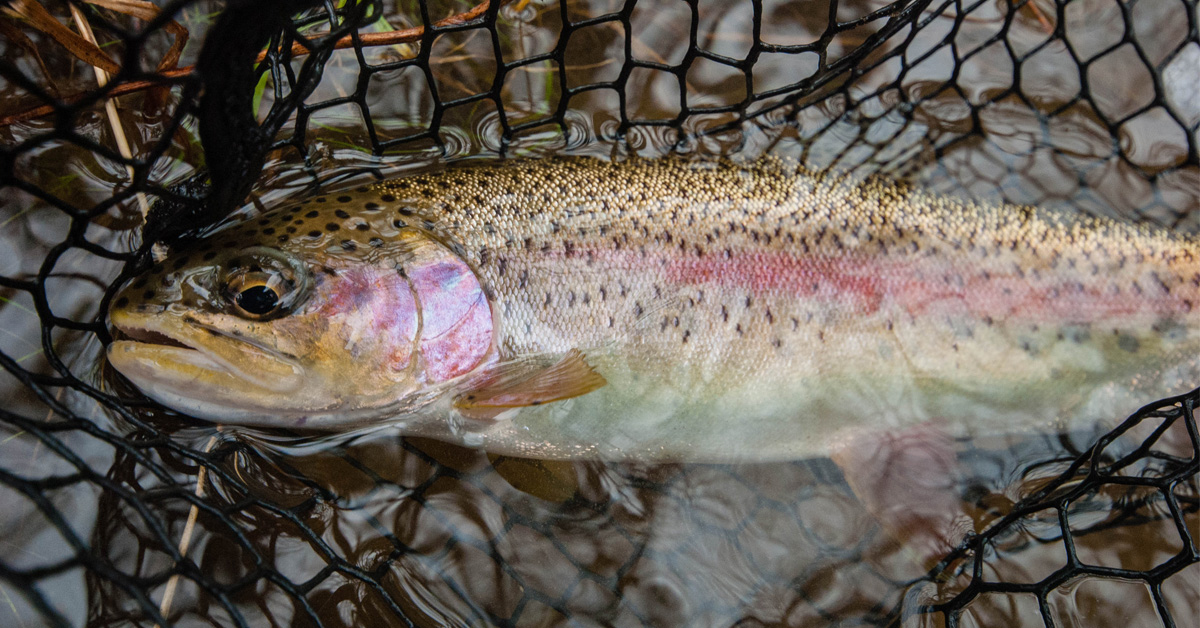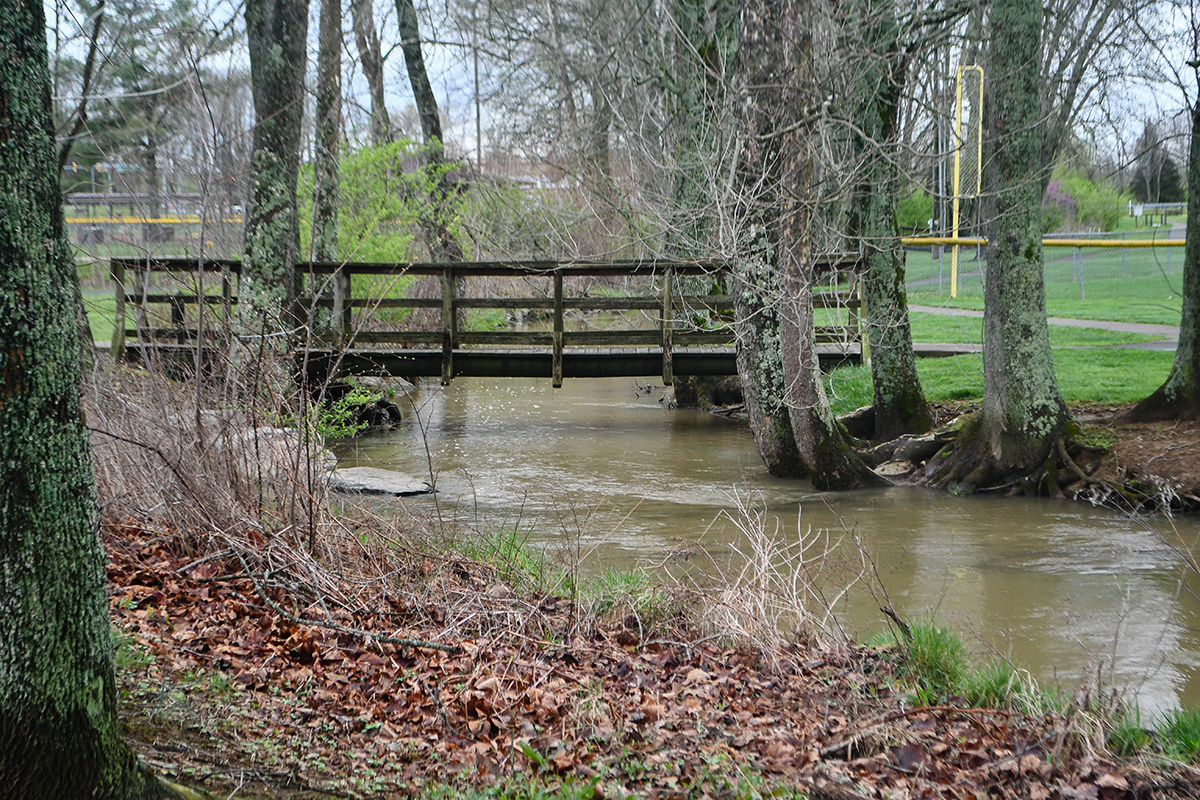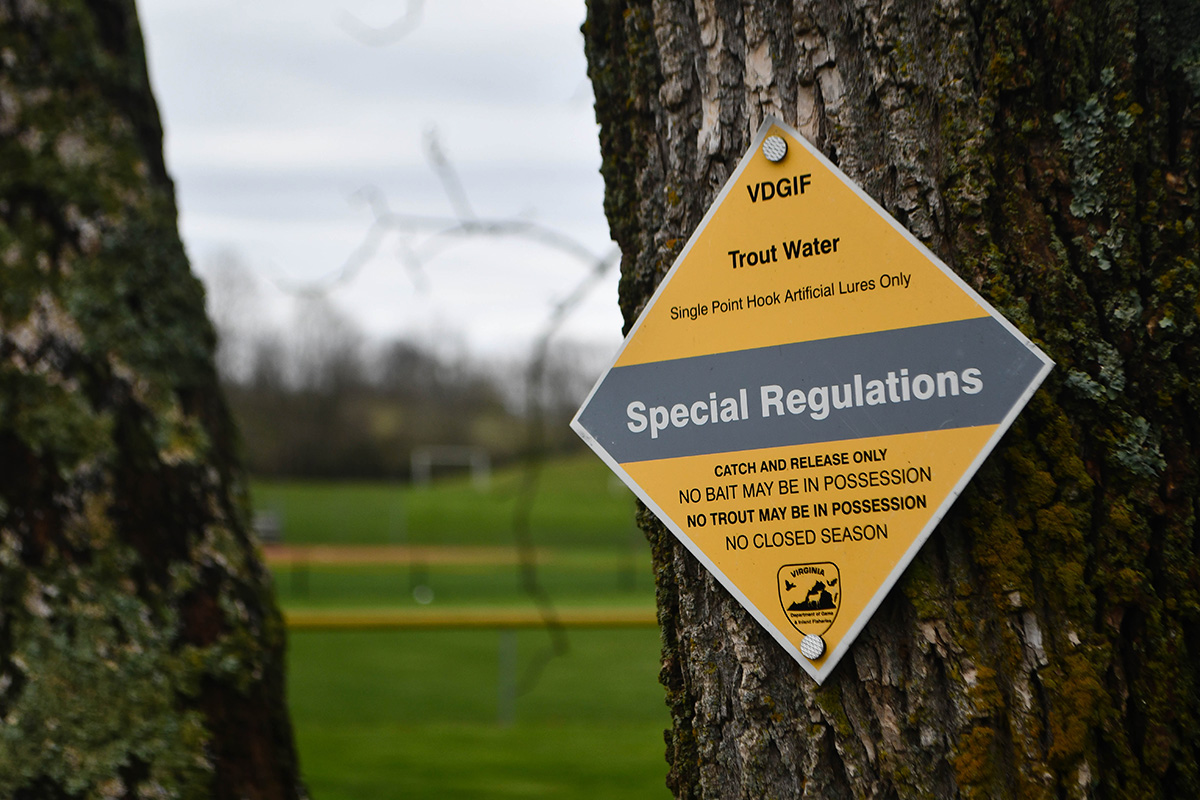Beaver Creek: Fish Local at an Overlooked Urban Trout Fishery

By Matt Reilly
Photos by Matt Reilly
For many anglers in the Old Dominion, trout fishing is synonymous with a remote experience—with boulder-strewn Blue Ridge streams filled with brook trout, strong wild rainbows in the National Forest, and stocked trout in the larger Valley floor streams of Shenandoah. Trips to town are reserved for errands, and “urban fisheries” are for those located well away from mountain trout fishing. Beaver Creek in Washington County may shift that paradigm.
Located within the city limits of Bristol, Virginia, Beaver Creek is a spring-fed creek that flows a long distance through Virginia and Tennessee before feeding Boone Lake south of the state line. Of note to anglers, Beaver Creek can be publicly accessed where it flows through the popular Sugar Hollow Park.

In the park, Beaver Creek first gained attention as a stream restoration project many years ago, and was an unmanaged fishery.
According to DWR’s Region 3 Fisheries Biologist Steve Owens, active fisheries management of the creek began in 2017, when the trout fishery was established through fingerling stockings. Beaver Creek was added to the list of DWR-managed trout waters in 2018 as a catch-and-release fishery, which accommodates the consumption advisories placed on the watershed by the Department of Health, and annual stockings of fingerling rainbow and brown trout continue to support the population. As is the case in all of Virginia’s catch-and-release trout fisheries, anglers are limited to single-point hook artificial lures in Beaver Creek.
“Beaver Creek is a unique fishery in that it is located near an increasingly urban area and is located within a popular park that offers ball fields, hiking/mountain biking trails, picnic areas, and even a campground. This allows angling opportunities that can be mixed in with other outdoor activities and is perfect for families,” said Owens. “The stream is large enough that it can be easily fished with a fly rod or spinning gear with single hook artificial lures. Anglers should focus their efforts downstream of the TVA dry dam to the lower park boundary.”

Fly anglers would be best suited with a four- or five-weight fly rod and a selection of nymphs, streamers, and terrestrial dry flies—which can often provide some of the most exciting fishing on a pastoral spring creek. Spin anglers would be wise to tote an ultra-light or light-action rod loaded with a box of spinners and trout magnets. Just be sure to replace any treble hooks with single hooks in accordance with the regulations.
This spring, consider taking a detour from southwest Virginia’s phenomenal mountain trout fishing to experience a fishery that’s hidden in plain sight. Or, pack up the kids, plan a picnic, and tote a few rods along to the park for an afternoon of mixed recreation. Just remember to watch your backcast for walkers and cyclists.
Matt Reilly is a full-time freelance writer, outdoor columnist, and fly fishing guide based in southwest Virginia.
